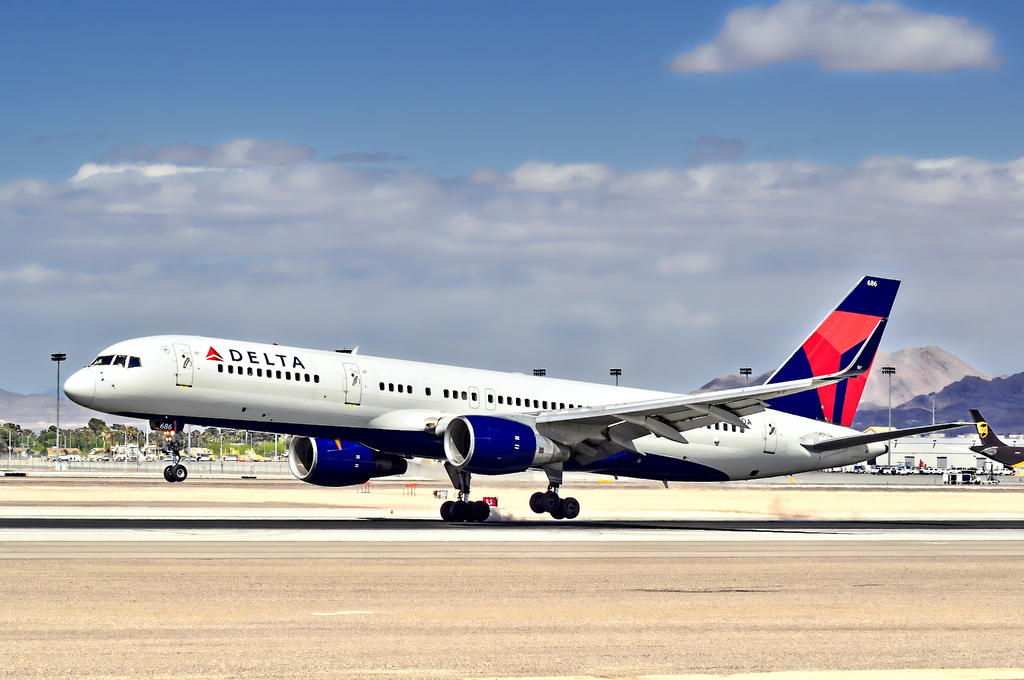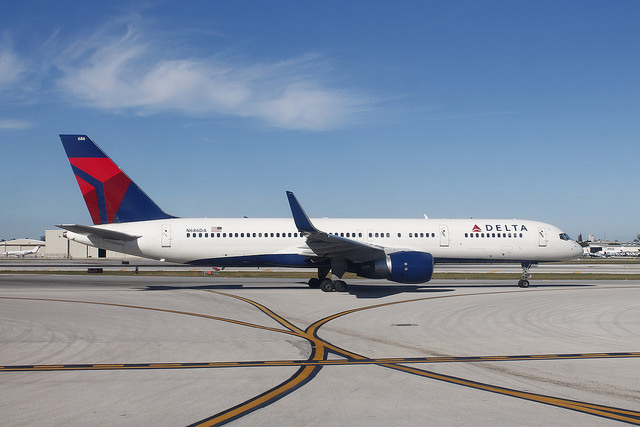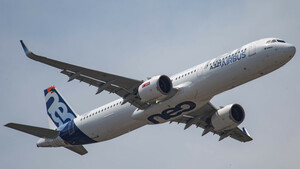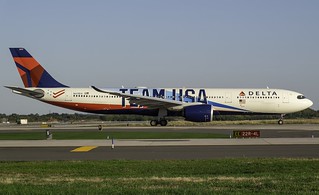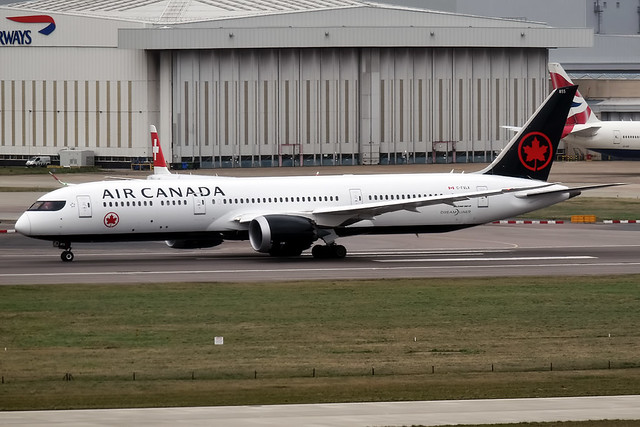Delta B752 at Las Vegas on Sep 6th 2017, engine fire
Last Update: October 1, 2019 / 21:04:31 GMT/Zulu time
Incident Facts
Date of incident
Sep 6, 2017
Classification
Incident
Cause
Engine fire
Airline
Delta Airlines
Flight number
DL-1057
Departure
Las Vegas, United States
Destination
New York JFK, United States
Aircraft Registration
N686DA
Aircraft Type
Boeing 757-200
ICAO Type Designator
B752
A replacement Boeing 757-200 registration N535US reached New York with a delay of 7:45 hours.
On Oct 4th 2017 the NTSB reported that the left hand engine sustained an undercowl fire during takeoff from Las Vegas. The crew received an associated fire indication and warnings during rotation/initial climb, worked the related checklists, shut the engine down and discharged one fire bottle. The aircraft joined a downwind to return to Las Vegas, however, during the downwind a second left engine fire indication occurred, the crew discharged the second fire bottle. The aircraft landed overweight at McCarran Airport, emergency services sprayed fire retardent into the engine and cleared the aircraft to taxi to the apron under own power. The occurrence was rated an incident and is being investigated.
On Sep 19th 2019 the NTSB described tests and research as well as corrective actions:
Engine Examination and Disassembly
The No. 1 engine was removed from the airplane by Delta Air Lines (DAL) maintenance personnel at LAS and shipped to Delta TechOps- Atlanta, Georgia for examination and disassembly. Party members from DAL, Pratt & Whitney (P&W), Boeing, the Air Line Pilots Association (ALPA), the Federal Aviation Administration, and the National Transportation Safety Board met at Delta TechOps from September 26-28, 2017.
The compressor fan blades were all present and complete. Three fan blades located at the 6 o'clock position exhibited midspan shroud shingling and the fan blade tips were dug into the fan case rub strip and displaced about one inch in the aft direction. The fan could not be rotated by hand until the three shingled fan blades were forced back into their normal position with a pry bar. After the fan blades were adjusted, the fan could be spun smoothly by hand with concurrent rotation of the low pressure turbine. All exterior engine surfaces aft of the fan exit case were sooted. The engine had thermal damage and dark discoloration most concentrated over the high pressure compressor (HPC) and diffuser cases on the lower half of the engine (3 to 9 o'clock positions). Fuel components including the stator vane actuator (SVA), fuel flow transmitter (FFT), and associated fuel lines were thermally damaged with melted and missing material. The thermal damage to these components resulted in fuel system leak points. A SVA hose and tube assembly was found separated and hanging freely from the engine. A leak check of the fuel manifolds and fuel nozzle assemblies was performed by porting shop air into the fuel flow divider valve in accordance with engine maintenance manual procedures. When pressurized air was applied, an air leak was detected at fuel nozzle #7, located at the 3 o'clock position. The nozzle was removed from the engine as an assembly by cutting the fuel manifold supply line, so the fuel nozzle b-nut remained torqued. Preliminary x-rays of the nozzle were taken at Delta TechOps. The x-rays indicated the fuel nozzle b-nut was not properly installed. The fuel nozzle assembly SVA hose and tube assembly that was found separated were packaged and shipped to the P&W Materials and Processes Engineering Lab in East Hartford, Connecticut for additional analysis.
Materials Analysis
Fuel nozzle #7 was x-rayed at the P&W Quality and Standard Laboratory in East Hartford, Connecticut. The x-ray images confirmed that the b-nut was tilted relative to the nozzle platform and the end of the b-nut was not centered with the nozzle fuel supply tube (cross threaded). There was one or fewer threads engaged between the nozzle and b-nut.
The fuel nozzle assembly was sectioned. The o-ring on the fuel nozzle side was present and intact. The second o-ring located on the fuel manifold supply line side was damaged and o-ring fragments were recovered outside of the o-ring gland, near the conical washer seal.
The SVA hose and tube assembly was examined to verify there were no anomalies in the SVA flexible hose to rigid tube connection joint. The SVA flexible hose section exhibited thermal damage including a missing fire sleeve and hose liner. The hose liner was separated at one end of the connection to the rigid tube, but other joint connection remained intact. Metallographic sections were taken of both the intact joint and the separated joint and there were no significant differences observed.
Corrective Action
Following the event, DAL voluntarily inspected all PW2000 engines in the Delta TechOps repair shop, test cell, and spares pool for proper fuel nozzle installation, with no additional installation error findings. They also reviewed shop records and identified two in service engines that were overhauled/repaired at approximately the same time as the incident engine. The fuel nozzles on these engines were inspected with no findings. In an effort to avoid future installation errors, the diffuser and combustor assembly work instruction card was updated to add an inspector sign off requirement during the pneumatic leak check step of the fuel system assembly.
On Oct 1st 2019 the NTSB released their final report concluding the probable cause of the incident was:
A No. 1 (left) engine undercowl fire caused by a fuel nozzle installation error during engine overhaul at Delta TechOps. A fuel nozzle b-nut was cross threaded, which allowed fuel to leak on hot engine case surfaces and subsequently ignite.
Aircraft Registration Data
Incident Facts
Date of incident
Sep 6, 2017
Classification
Incident
Cause
Engine fire
Airline
Delta Airlines
Flight number
DL-1057
Departure
Las Vegas, United States
Destination
New York JFK, United States
Aircraft Registration
N686DA
Aircraft Type
Boeing 757-200
ICAO Type Designator
B752
This article is published under license from Avherald.com. © of text by Avherald.com.
Article source
You can read 2 more free articles without a subscription.
Subscribe now and continue reading without any limits!
Read unlimited articles and receive our daily update briefing. Gain better insights into what is happening in commercial aviation safety.
Send tip
Support AeroInside by sending a small tip amount.
Related articles
Delta B752 near Denver on Mar 28th 2022, loss of cabin pressure
A Delta Airlines Boeing 757-200, registration N686DA performing flight DL-339 from Atlanta,GA to Seattle,WA (USA) with 185 passengers and 7 crew, was…
Delta B712 enroute on Jan 10th 2026, lightning strike
A Delta Airlines Boeing 717-200, registration N919AT performing flight DL-2216 from Wichita,KS to Atlanta,GA (USA), was enroute at FL290 when the…
Delta A321 near Kansas City on Jan 3rd 2026, engine shut down in flight
A Delta Airlines Airbus A321-200, registration N349DX performing flight DL-2883 from Denver,CO to Detroit,MI (USA) with 169 passengers and 6 crew,…
Delta B739 near Atlanta on Dec 30th 2025, odour in cabin
A Delta Airlines Boeing 737-900, registration N801DZ performing flight DL-2150 from Miami,FL to Minneapolis,MN (USA) with 111 passengers and 6 crew,…
Delta A21N near Tampa on Dec 27th 2025, unusual odour on board
A Delta Airlines Airbus A321-200N, registration N503DZ performing flight DL-504 from Orlando,FL to Los Angeles,CA (USA) with 194 passengers and 6…
Delta A339 near Detroit on Nov 30th 2025, engine shut down in flight
A Delta Airlines Airbus A330-900, registration N411DX performing flight DL-162 from Minneapolis,MN (USA) to Amsterdam (Netherlands), was enroute at…
Newest articles
EAT Leipzig A306 at Brussels on Nov 26th 2020, rejected takeoff above V1 due to difficulties becoming airborne
An EAT Leipzig Airbus A300-600 freighter on behalf of DHL, registration D-AEAI performing flight QY-841 from Brussels (Belgium) to Vitoria,SP…
Canada B789 at Auckland on Jan 13th 2026, unusual odour
An Air Canada Boeing 787-9, registration C-FVLX performing flight AC-40 from Auckland (New Zealand) to Vancouver,BC (Canada) with 269 passengers and…
Subscribe today
Are you researching aviation incidents? Get access to AeroInside Insights, unlimited read access and receive the daily newsletter.
Pick your plan and subscribePartner

ELITE Simulation Solutions is a leading global provider of Flight Simulation Training Devices, IFR training software as well as flight controls and related services. Find out more.
SafetyScan Pro provides streamlined access to thousands of aviation accident reports. Tailored for your safety management efforts. Book your demo today
AeroInside Blog
Popular aircraft
Airbus A320Boeing 737-800
Boeing 737-800 MAX
Popular airlines
American AirlinesUnited
Delta
Air Canada
Lufthansa
British Airways


